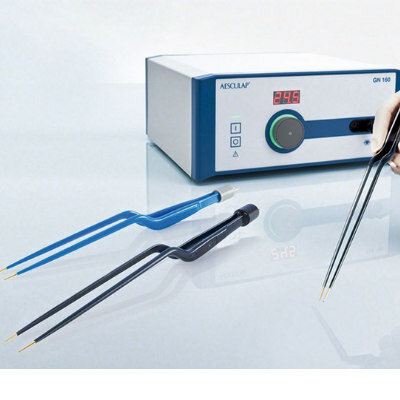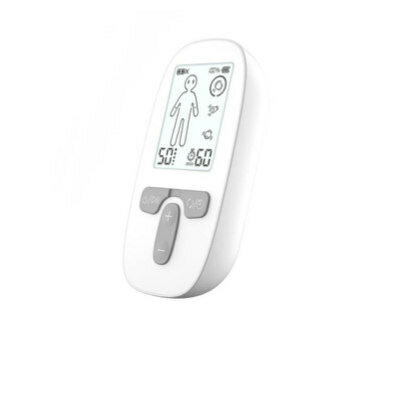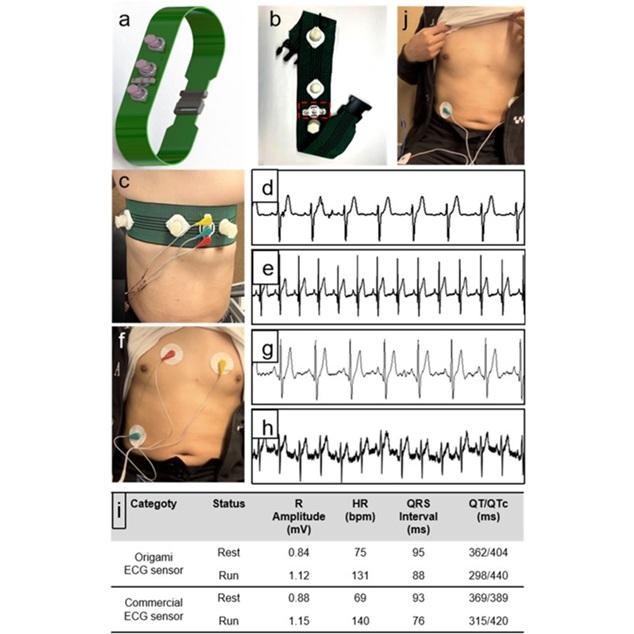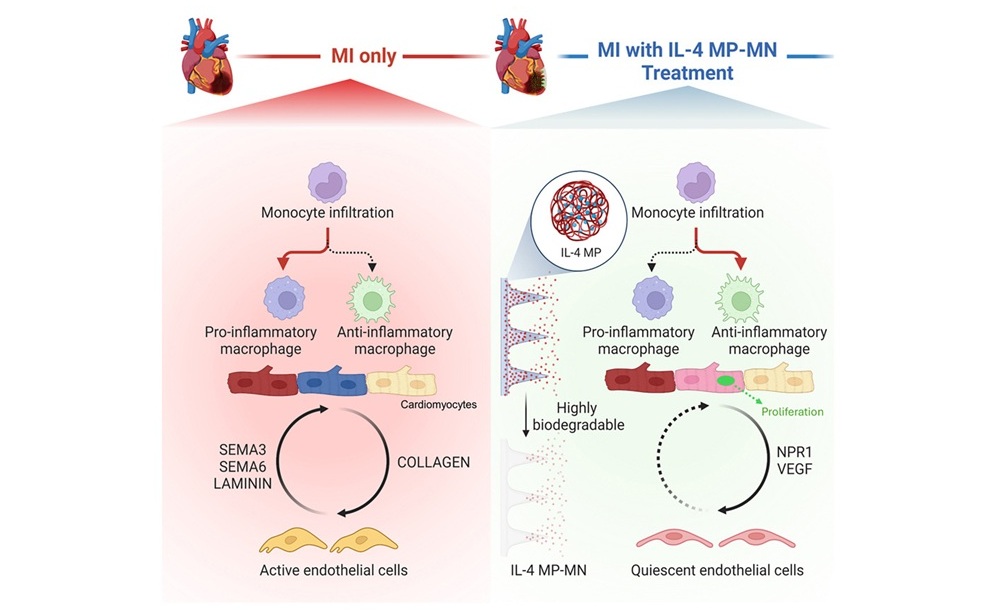Pioneering System Diagnoses Cancerous Tissue During Endoscopy
|
By HospiMedica International staff writers Posted on 16 Jun 2014 |
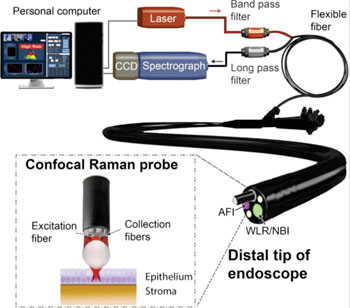
Image: Rapid fiber-optic confocal Raman spectroscopy system developed for real-time in vivo epithelial tissue diagnosis and characterization during endoscopy (Photo courtesy of Prof. Zhiwei Huang, the National University of Singapore, and the journal Gastroenterology).
A biomedical engineering team has developed a first of its kind in vivo molecular diagnostic system that makes highly objective, real-time cancer diagnosis during endoscopic examination a reality.
A National University of Singapore (NUS) team led by Associate Professor Huang Zhiwei, Department of Biomedical Engineering, has developed what is currently the only system clinically shown to be used in human patients for diagnosing even precancerous tissue in gastrointestinal tract during endoscopic examination in real time. Unlike conventional endoscopy that relies on the physician's visual interpretation of the images followed by a pathologist's analysis of the biopsy specimen several days later, their diagnostic system utilizes computer analysis of biomolecular information that can provide diagnosis in real time. It is a paradigm shift from a complex to a simple, objective, and rapid diagnostic procedure.
The In Vivo Molecular Diagnostic (IVMD) system is based on confocal Raman spectroscopy and includes a proprietary confocal fiber-optic probe connected to a customized online software control system. The fiber-optic probe enables the collection of biomolecular fingerprint of tissues in less than a second—while the online software enables this information to be extracted and analyzed, with diagnostic result presented during endoscopic examination. The IVMD system has been used in more than 500 patients in Singapore across diverse cancer types such as stomach, esophagus, colon, rectum, head and neck, and cervix. The researchers have also published more than 40 peer-reviewed publications, most recently a report by Bergholt MS, et al. in the journal Gastroenterology, published January 2014.
“We are delighted to not only overcome the technical challenges of weak Raman signal, high fiber background noise, and lack of depth perception by using our specially designed probe, but also to enable real-time diagnostic results to be displayed during endoscopy with our customized software,” said Prof. Huang.
For the clinical testing, the team has been collaborating with researchers from the NUS Yong Loo Lin School of Medicine, led by its Dean, Associate Professor Khay Guan Yeoh. Prof. Yeoh commented, “This remarkable new system is the first such diagnostic probe that can be used real-time, inside the human body, providing almost instantaneous information on cellular changes, including cancer and pre-cancer. This is a first in the world development, pioneered here in Singapore. It has the potential to make enormous clinical impact to how cancer is diagnosed and managed. The immediate point-of-care diagnosis during live endoscopic examinations will provide benefits in time and cost-savings, and will improve our patients’ prognosis.”
“It has been a long tedious journey of more than 10 years. The journey could be longer if not for the excellent cross-disciplinary teamwork at NUS. The contribution of the NUS clinical team is invaluable in demonstrating the clinical benefits of the system,” added Prof Huang. Moving forward, the team will conduct larger scale clinical trials, mainly in gastrointestinal cancer, to further validate the utility of this novel system.
Related Links:
National University of Singapore
Video: Clinical Use of Raman spectroscopy software during an endoscopic procedure
A National University of Singapore (NUS) team led by Associate Professor Huang Zhiwei, Department of Biomedical Engineering, has developed what is currently the only system clinically shown to be used in human patients for diagnosing even precancerous tissue in gastrointestinal tract during endoscopic examination in real time. Unlike conventional endoscopy that relies on the physician's visual interpretation of the images followed by a pathologist's analysis of the biopsy specimen several days later, their diagnostic system utilizes computer analysis of biomolecular information that can provide diagnosis in real time. It is a paradigm shift from a complex to a simple, objective, and rapid diagnostic procedure.
The In Vivo Molecular Diagnostic (IVMD) system is based on confocal Raman spectroscopy and includes a proprietary confocal fiber-optic probe connected to a customized online software control system. The fiber-optic probe enables the collection of biomolecular fingerprint of tissues in less than a second—while the online software enables this information to be extracted and analyzed, with diagnostic result presented during endoscopic examination. The IVMD system has been used in more than 500 patients in Singapore across diverse cancer types such as stomach, esophagus, colon, rectum, head and neck, and cervix. The researchers have also published more than 40 peer-reviewed publications, most recently a report by Bergholt MS, et al. in the journal Gastroenterology, published January 2014.
“We are delighted to not only overcome the technical challenges of weak Raman signal, high fiber background noise, and lack of depth perception by using our specially designed probe, but also to enable real-time diagnostic results to be displayed during endoscopy with our customized software,” said Prof. Huang.
For the clinical testing, the team has been collaborating with researchers from the NUS Yong Loo Lin School of Medicine, led by its Dean, Associate Professor Khay Guan Yeoh. Prof. Yeoh commented, “This remarkable new system is the first such diagnostic probe that can be used real-time, inside the human body, providing almost instantaneous information on cellular changes, including cancer and pre-cancer. This is a first in the world development, pioneered here in Singapore. It has the potential to make enormous clinical impact to how cancer is diagnosed and managed. The immediate point-of-care diagnosis during live endoscopic examinations will provide benefits in time and cost-savings, and will improve our patients’ prognosis.”
“It has been a long tedious journey of more than 10 years. The journey could be longer if not for the excellent cross-disciplinary teamwork at NUS. The contribution of the NUS clinical team is invaluable in demonstrating the clinical benefits of the system,” added Prof Huang. Moving forward, the team will conduct larger scale clinical trials, mainly in gastrointestinal cancer, to further validate the utility of this novel system.
Related Links:
National University of Singapore
Video: Clinical Use of Raman spectroscopy software during an endoscopic procedure
Latest Surgical Techniques News
- Novel Endoscopy Technique Provides Access to Deep Lung Tumors
- New Study Findings Could Halve Number of Stent Procedures
- Breakthrough Surgical Device Redefines Hip Arthroscopy
- Automated System Enables Real-Time "Molecular Pathology" During Cancer Surgery
- Groundbreaking Procedure Combines New Treatments for Liver Tumors
- Ablation Reduces Stroke Risk Associated with Atrial Fibrillation
- Optical Tracking Method Identifies Target Areas in Robot-Assisted Neurosurgery
- General Anesthesia Improves Post-Surgery Outcomes for Acute Stroke Patients
- Drug-Coated Balloons Can Replace Stents Even in Larger Coronary Arteries
- Magnetic Kidney Stone Retrieval Device Outperforms Ureteroscopic Laser Lithotripsy
- Absorbable Skull Device Could Replace Traditional Metal Implants Used After Brain Surgery
- Magic Silicone Liquid Powered Robots Perform MIS in Narrow Cavities
- 'Lab-on-a-Scalpel' Provides Real-Time Surgical Insights for POC Diagnostics in OR
- Biodegradable Brain Implant Prevents Glioblastoma Recurrence
- Tiny 3D Printer Reconstructs Tissues During Vocal Cord Surgery
- Minimally Invasive Procedure for Aortic Valve Disease Has Similar Outcomes as Surgery
Channels
Critical Care
view channel
Nanogel Technology Almost 100% Effective in Destroying Drug-Resistant Bacteria Within Hours
Antibiotic resistance is one of the most serious global health threats, driven by bacteria that evade treatment and form protective biofilms that shield them from drugs. Pathogens such as Pseudomonas aeruginosa,... Read more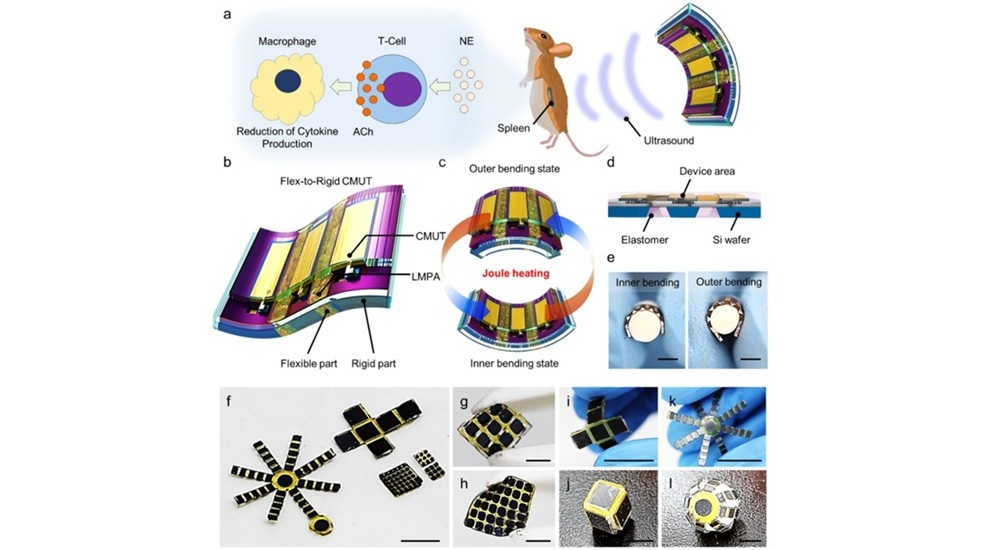
Wearable Ultrasound Sensor Delivers Noninvasive Treatment Without Surgery
Wearable ultrasound devices have long struggled with low acoustic power and poor structural stability, limiting their use in high-resolution imaging and therapeutic applications. Conventional flexible... Read moreSurgical Techniques
view channelNovel Endoscopy Technique Provides Access to Deep Lung Tumors
Detecting lung cancer early can save lives, but diagnosing small tumors deep in the outer regions of the lungs remains a major clinical challenge. Although CT scans frequently identify tiny suspicious... Read more
New Study Findings Could Halve Number of Stent Procedures
When a coronary artery becomes acutely blocked during a heart attack, opening it immediately is essential to prevent irreversible damage. However, many patients also have other narrowed vessels that appear... Read morePatient Care
view channel
Revolutionary Automatic IV-Line Flushing Device to Enhance Infusion Care
More than 80% of in-hospital patients receive intravenous (IV) therapy. Every dose of IV medicine delivered in a small volume (<250 mL) infusion bag should be followed by subsequent flushing to ensure... Read more
VR Training Tool Combats Contamination of Portable Medical Equipment
Healthcare-associated infections (HAIs) impact one in every 31 patients, cause nearly 100,000 deaths each year, and cost USD 28.4 billion in direct medical expenses. Notably, up to 75% of these infections... Read more
Portable Biosensor Platform to Reduce Hospital-Acquired Infections
Approximately 4 million patients in the European Union acquire healthcare-associated infections (HAIs) or nosocomial infections each year, with around 37,000 deaths directly resulting from these infections,... Read moreFirst-Of-Its-Kind Portable Germicidal Light Technology Disinfects High-Touch Clinical Surfaces in Seconds
Reducing healthcare-acquired infections (HAIs) remains a pressing issue within global healthcare systems. In the United States alone, 1.7 million patients contract HAIs annually, leading to approximately... Read moreHealth IT
view channel
EMR-Based Tool Predicts Graft Failure After Kidney Transplant
Kidney transplantation offers patients with end-stage kidney disease longer survival and better quality of life than dialysis, yet graft failure remains a major challenge. Although a successful transplant... Read more
Printable Molecule-Selective Nanoparticles Enable Mass Production of Wearable Biosensors
The future of medicine is likely to focus on the personalization of healthcare—understanding exactly what an individual requires and delivering the appropriate combination of nutrients, metabolites, and... Read moreBusiness
view channel
Philips and Masimo Partner to Advance Patient Monitoring Measurement Technologies
Royal Philips (Amsterdam, Netherlands) and Masimo (Irvine, California, USA) have renewed their multi-year strategic collaboration, combining Philips’ expertise in patient monitoring with Masimo’s noninvasive... Read more
B. Braun Acquires Digital Microsurgery Company True Digital Surgery
The high-end microsurgery market in neurosurgery, spine, and ENT is undergoing a significant transformation. Traditional analog microscopes are giving way to digital exoscopes, which provide improved visualization,... Read more
CMEF 2025 to Promote Holistic and High-Quality Development of Medical and Health Industry
The 92nd China International Medical Equipment Fair (CMEF 2025) Autumn Exhibition is scheduled to be held from September 26 to 29 at the China Import and Export Fair Complex (Canton Fair Complex) in Guangzhou.... Read more







